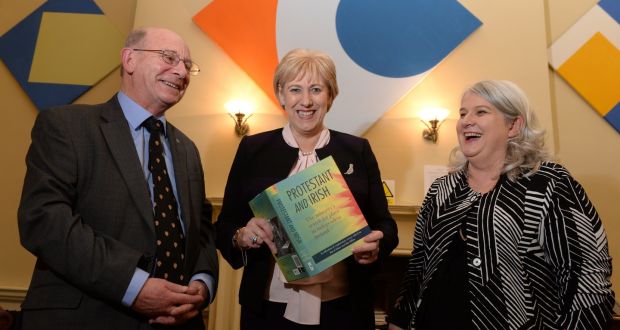Protestant and Irish: The minority’s search for place in independent Ireland
Ian d’Alton and Ida Milne (Cork University Press, €49.00)
This collection of essays provides a comprehensive account of Irish Protestants – their attitudes, the decisions they took and their role in public life – after the Irish Free State was established in 1922.
Following the revolutionary years from 1916 to 1922 Protestants were angry, disillusioned and fearful. They were angry at having been abandoned by Britain, they were disillusioned at the manner of their betrayal by their co-religionists in Ulster and they were fearful how they would be treated in the new, independent and overwhelmingly Catholic State.
They were a disparate group, consisting of landlords, land agents and large farmers (‘ranchers’), middle-class professionals and business people and a working-class, and there were further differences within those categories.
Because of the various land acts landlordism was a spent force by the early 20th Century. The influence of landlords was further diminished by the advent of the new State. This, however, did not dissuade them from searching for a place in independent Ireland.
Dominant
George O’Callaghan-Westropp (1864 –1944) and others attempted to ensure that in the guise of the Irish Farmers’ Union and the Farmers Party they would retain much of their former economically and politically dominant position in the country.
However, the project failed as the Irish Farmers’ Union was depicted as “a party of landlords and ranchers which could never be depended on to defend the interests of small farmers”.
Another landlord, Robert Malachy Burke (1907–98), was more successful in carving out a place in the new State. He represented Labour in the Seanad and headed the polls at local elections. Then there was Edward Richards-Orpen (1884–1967). He was a cardinal figure in the politics of Cumann na nGaedheal, the Centre Party and eventually Fine Gael. And as a public commentator, researcher and writer he made a significant contribution to life in the new State.
In ‘The life and death of Protestant Businesses in the Independent Ireland’ Frank Barry illustrates how until the middle of the last century Protestants had a monopoly of the senior positions in banking, auditing firms and the law. Until that time also Protestant family firms conducted most of the business in the cities and provincial towns.
However, by 1973 long-established Protestant businesses had merged with Catholic firms, merit-based promotion was becoming the norm, and the Protestant contribution to the commercial life of the State continued on more equitable terms.
Hugh Maguire discusses Protestants who had little difficulty in coming to terms with the new administration. These were Protestants who supported the Sinn Féin movement, some of whom were active in the Easter Rising, war of independence or both.
Maguire provides a valuable list of them – 66 men and 33 women. The best known of the women was Constance Markiewicz who was a member of the first Dáil Éireann and served as its minister for Labour.
Protestants supported and played rugby, soccer, tennis and hockey. These games were introduced to Ireland by the crown forces and were promoted officially as part of an acculturisation process.
Not surprisingly, Protestants evinced no interest in Gaelic games which were wrapped in the green flag of nationalism and were organised and played on Sunday which by religious conviction they considered should be spent in a radically different way. But, as Ida Milne points out in her delightful essay, they always joined in celebrating the success of local sporting heroes.
Felix Larkin in a beautifully illustrated essay looks at how cartoonists featured Protestants and their cherished institutions. He highlights the art of Charles E. Kelly and Dublin Opinion which was without a hint of malevolence. Caleb Wood Richardson examines the use of humour by Patrick Campbell as a form of a self-deprecatory Protestant and Anglo-Irish defensive mechanism.
Prompted by a natural instinct for self-preservation, while Protestants resided next to their Catholic neighbours, they lived separately from them. As Ian d’Alton noted, they chose to be a self-contained community within the national polity. In so doing they successfully retained their distinctive values and traditions.
Whether they or their Catholic neighbours will succeed in retaining their joint Christian heritage in the face of the drive to secularisation by the present political elite remains to be seen.


 Minister for Business Heather Humphreys (centre) at the launch of the book with the authors
Minister for Business Heather Humphreys (centre) at the launch of the book with the authors